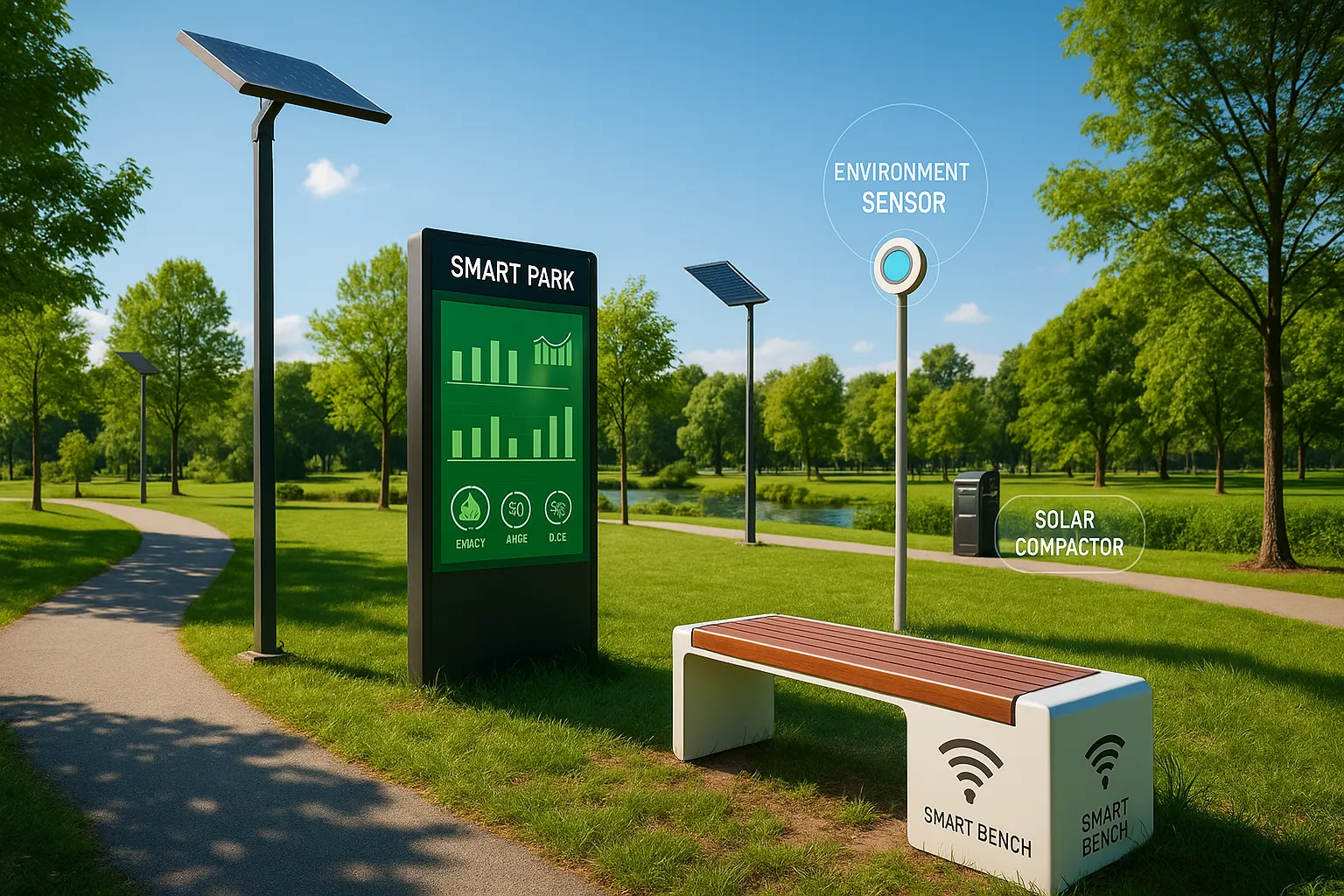Ann Arbor is no longer treating its parks as passive green zones. Instead, the city is reshaping them into intelligent, connected ecosystems. Through the use of cutting-edge technologies, these Smart Parks are elevating everything from safety to sustainability—turning a simple walk in the park into a glimpse into the future of urban innovation.
As part of its A²ZERO Plan to reach carbon neutrality by 2030, Ann Arbor is blending environmental care with digital infrastructure. Let’s break down how these future-ready spaces work and what’s next.
What Are Smart Parks?
Smart Parks are not just places to relax under a tree. They integrate IoT sensors, automation, renewable energy, and connected platforms to create responsive public spaces. Think lighting that adjusts based on movement, sprinklers that know exactly when to water, and benches that charge your phone while you sit.
In Ann Arbor, this isn’t a concept—it’s already happening in parks like Gallup Park, Leslie Park, and Nichols Arboretum. These tech-forward spaces are built to improve park operations, preserve nature, and offer a smarter, more personal experience for visitors.
Lighting the Way: Motion Sensors for Safety
Park safety has taken a leap forward. Motion-activated lighting systems are being rolled out on popular pedestrian and cycling paths. These smart lights remain dim during inactivity and automatically brighten when someone approaches.
By saving energy while increasing visibility, these lights serve dual purposes. In secluded areas like Barton Nature Area, they help park rangers monitor nighttime activity and respond quickly to unusual behavior.
Smarter Landscaping with Soil and Water Sensors
Managing landscapes across city parks can be wasteful—unless you let data lead the way. Ann Arbor has implemented soil moisture and nutrient sensors in combination with automated irrigation systems. These tools help determine precise watering needs, avoiding excess use and protecting native species.
Parks with large open fields, such as Buhr Park, are already seeing cost savings and healthier vegetation thanks to this efficient approach.
Solar Energy at Work
Tech in Ann Arbor’s parks doesn’t come with an environmental price tag. The city is installing solar-powered infrastructure—from lighting poles to USB charging stations and even solar-powered trash compactors.
Locations like the Argo Canoe Livery and the Farmers Market Pavilion showcase how renewable energy can support public services without the need for heavy construction or deep-wired power systems. It’s cleaner, quieter, and perfectly suited for natural environments.
Real-Time Data for Smarter Management
Smart Parks wouldn’t be smart without data. Ann Arbor uses real-time sensor networks to track:
- Foot traffic
- Equipment status
- Air and noise quality
- Waste bin fill levels
- Environmental conditions
This information is delivered to mobile dashboards so that park officials can make informed decisions—like deploying more staff during peak hours at Nichols Arboretum or adjusting services ahead of weather changes.
Table: Key Smart Technologies in Ann Arbor’s Parks
| Technology | Functionality & Benefit |
|---|---|
| Motion-activated lighting | Boosts security while reducing energy consumption |
| Soil & moisture sensors | Enables efficient irrigation and plant care |
| Solar infrastructure | Provides sustainable power for public amenities |
| Environmental sensors | Monitors usage, pollution, and ecosystem health |
| Mobile dashboards | Allows real-time oversight and faster response |
What’s Next: The Future of Smart Parks
Ann Arbor isn’t stopping here. The city plans to expand its smart park strategy with even more user-centered innovations:
Smart Benches
Equipped with wireless charging ports and public Wi-Fi, these benches turn passive seating areas into functional hubs for modern life.
AR-Enhanced Trails
Imagine scanning a tree and seeing its history or ecological role. Augmented reality will turn simple trails into immersive, educational experiences.
Eco Dashboards
Public displays showing live air quality, noise levels, and energy use will give visitors a better sense of their environment—and the city’s sustainability progress.

